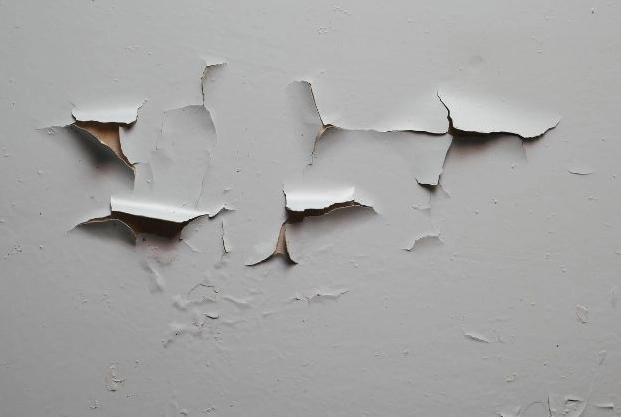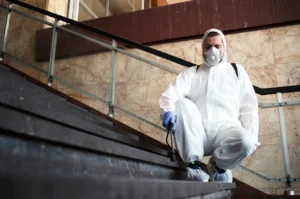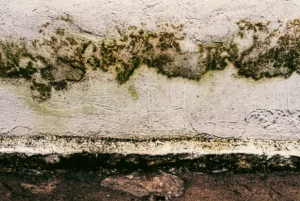Did you know some homes still have toxic lead paint under fresh coats?
It may seem to be another layer of color. But if your home was built before 1978, it may hide something dangerous. Lead paint was previously a finish for walls, windows, and woodwork. Until it proved to be dangerous. If children are exposed to this, they can experience learning and behavioral problems.
That is why early detection of warning signs is important. You don’t have to open your walls to find answers. All you need is to know what to look for. So, how to identify lead paint? And how it affects your health.
This blog will show you the warning signs and what to do next if you believe your home is at risk.
When Was Your Home Built?
Checking the age of your home is one of the steps to learning how to identify lead paint. In 1978, the United States banned lead-based paint in residential structures. But it was widely used for decades before that. So, if your home is older, lead paint may still be lying beneath newer layers.
Here’s a guide to help you understand your risk level:
-
Built before 1940 – High Risk
These homes have lead paint on the walls, woodwork, and trim.
-
Built between 1940–1960 – Moderate Risk
Lead paint remained popular, but some constructions began to minimize its use.
-
Built between 1960–1978 – Low-to-Moderate Risk
The use of lead paint was decreasing, but it was not yet banned, so it is still possible.
It’s worth taking a closer look if your home was built before 1978. You never know what’s underneath unless you look.
The Visual Signs of Lead Paint
You may not require a lab test to detect lead paint. Sometimes the warning flags are right in front of you.
How to identify lead paint just by looking at your walls or windowsills? Start with these visual clues:
-
Cracking and Peeling like “Alligator Skin”
Lead paint often cracks like reptile scales. If your walls or trim have flaky paint that peels in large chunks, it’s a clear red flag.
-
Chalky or Dusty Texture
Rub your fingertips over the surface. If the paint leaves a chalky residue, it may be decaying lead paint. This dust is hazardous because it can spread throughout the atmosphere.
-
Thick, Layered Paint
Older homes usually have numerous layers of paint. If you notice thick edges or layers breaking off, the underlying layer may be lead-based. This is common near windows, doors, baseboards, and porches.
Also Read: Signs Your Home May Have Lead Paint and What to Do Next
Safe Lead Paint Testing Options
Seeing suspicious paint is good. But verifying that it contains lead is better. Luckily, there are simple ways to test without damaging your walls.
How to identify lead paint using a home test kit? It’s easier than you imagine. EPA-approved DIY kits like 3M LeadCheck or D-Lead, are available in hardware stores and online. They are quick and easy to use.
Here’s how to do it:
1. Clean the Surface
Wipe the area to remove dust or dirt. You need a clean area to get accurate results.
2. Rub the Test Swab
Follow the kit’s instructions. You can activate the swab by crushing or shaking it. Then, rub it on the painted surface.
3. Watch for Color Change
When lead is present, most kits turn red or pink. If there’s no shade change, it is negative. But remember that some results may not be 100% conclusive.
Reminder: DIY test kits are useful for quick checks. But they are not foolproof. If you’re having renovations or have children living in your house, it’s advisable to see a professional. They can provide an accurate assessment.
When to Call a Professional?
So, you’ve seen the signs. Or perhaps your DIY test turned out positive. What happens now?
How to identify lead paint? The safest way is to call a certified specialist. When your house’s paint is disturbed, it may release hazardous lead dust. That is not a risk you want to take.
Here’s why professional lead inspections are necessary:
-
Certified Testing Methods
Experts use modern technologies such as X-ray fluorescence (XRF) devices. Or they send paint samples to a lab for accurate findings.
-
Safe, Legal, and Compliant
Professionals follow security protocols to avoid contamination. If you intend to renovate or sell, you may need to remove lead hazards.
What to Do if You Find Lead Paint?
Finding lead paint in your home can be overwhelming, but don’t worry. The most important thing is not to handle it alone.
Never sand or scrape any surface that may contain lead. These may release toxic dust and fumes that are highly hazardous.
Here is what you can do:
-
Consider Lead-Safe Renovation
If you are planning a remodel, be sure the contractors are lead-safe trained. They understand how to contain and clean up lead dust correctly.
-
Use Paint Encapsulation
There is a particular sealant that can be used to “lock in” lead paint and prevent exposure to lead paint. This is effective if the paint is in good condition and does not flake.
-
Hire Certified Professionals
Lead removal is not a do-it-yourself job. Find a team that provides experienced inspection and remediation services. Make sure they meet all EPA and city safety standards.
Also Read: How Lead Paint Removal Works After a Professional Inspection
A Safer Home Starts with Awareness
Lead paint may be hidden beneath layers of time. But the risks remain real, particularly for children and families. The indications can be subtle, but you now know what to look for.
How to identify lead paint does not have to be complicated. Every step you take gets you closer to a safer and healthier home. Act immediately if your property was built before 1978. Testing for lead paint is a small decision that protects your loved ones.
Protect Your Home and Loved Ones Today
Your home should never be the source of hidden health hazards. Now that you know how to identify lead paint, you are with the first step toward a healthier environment.
Whether you need certified testing or remediation, NYC Lead and Mold is here to help. Our team provides expertise for each project, giving you peace of mind.
Do not put your family’s safety at risk. Trust NYC Lead and Mold to handle your lead paint issues. Let’s make your home lead-safe together.






